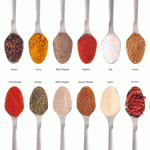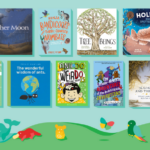Introduced species cannot remain eternally new in an ecosystem.
Native animals may soon be defined based on their interactions with other local species rather than their origin. Research conducted at the University of Sydney suggests that introduced species cannot remain “eternally new” in an ecosystem, and that, at some point, they must become locals.
To distinguish whether an introduced species has become native, the researchers decided to use the dingo as a case study. Their findings, published in the journal PLoS One, describe how distinctions between native and foreign species were made by observing the reactions of other local species.
“Our study puts forward an objective criterion to determine the native status of a species — to ‘ask’ the local fauna it interacts with. If local fauna recognise and respond effectively to the new species, it has become very well integrated into that community,” said associate professor Peter Banks, a member of the research team.
The perfect candidate
The researchers chose to evaluate the dingo (Canis lupus dingo) because its native status remains disputed. Dingos were introduced to Australia from Southeast Asia some 4,000 years ago. But can it be considered a native species today or should it remain an alien predator forever?
To put an end to the conundrum. The team tested the response of the native bandicoot (Perameles nasuta) to domestic dogs, which are the same species as the dingo. The bandicoot was chosen as a prime example of a native mammal because dogs and cats predate upon it. Bandicoots usually dig in the backyards of urban households, so its behaviour is relatively easy to track and analyse.
The researchers asked several locals around the Ku-ring-gai Chase National Park in New South Wales to monitor the number of bandicoots diggings in their yards. Then they compared bandicoots foraging in backyards of families that owned dogs to those that owned cats or had no pets.
“We found that bandicoots recognise the danger and avoided foraging in backyards that have dogs, but continue to visit yards of cat owners and petless households,” said Alex Carthey, PhD student in the School of Biological Sciences at The University of Sydney. The response suggests that bandicoots recognise the threat dogs pose as predators and react to them in the same way they would respond to a native predator.
“Our study suggests that bandicoots have come to fear dogs as predators after thousands of years of interaction with dingoes, and so avoid areas with dogs… They [bandicoots] are yet to recognise the threat cats pose as predators,” explained Carthey. Cats were introduced to Australia 150 years ago.
The Northern Territory legislation recognises the dingo as native wildlife; however, the wild dog does not receive the same protection as other native species. The results of Carthey and Banks’s research will have an impact on wild dog management and will alter the way people treat dingoes — one of Australia’s top predators.
Source: The University of Sydney









don owers
February 21, 2012
Science has now come up GE modified species, autocidal, that promise to deliver complete feral animal and insect control . So deciding on what is ferial and what is native is important. Also important is ensuring that when we eradicate the bunnie it isn’t a world wide process and that when we do in the carp there isn’t some native specie that has come to depend on them
.